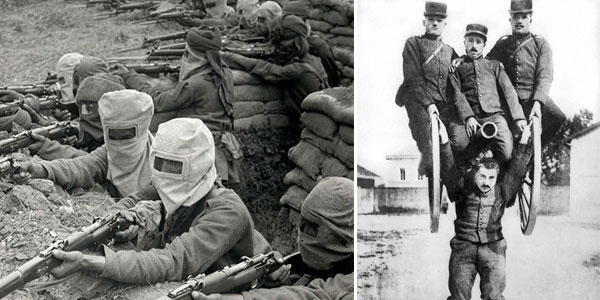The First World War often conjures up horrific images of a bloodbath fought in the trenches of the Western Front. It’s the first war fought on a global scale – in every ocean and almost every continent.
In honor of its centenary, here are 45 of the most arresting photos from World War I:
1. A soldier paying respects at a colleague’s grave near Cape Helles, where the Gallipoli landings took place (1915)

PA Photos/PA Archive/Press Association Images
2. British soldiers enjoying possession of a newly captured German trench, pointing to a sign that says “Old Hun Line.”
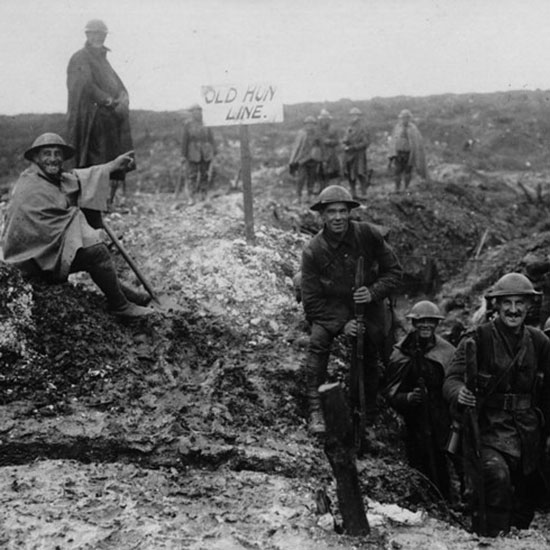
National Library of Scotland
3. A combat engineer listening to German movement near Verdun (1915)
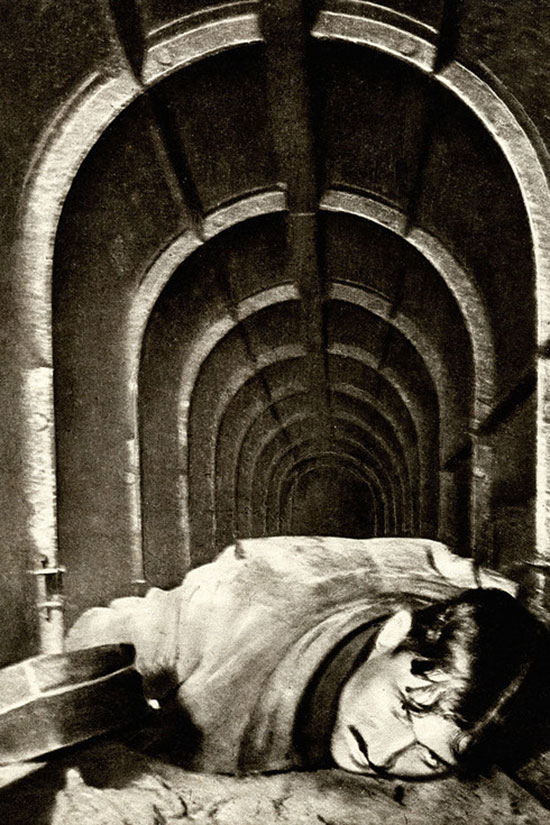
REX USA
4. Indian soldiers digging trenches (1915)

Charles Hilton DeWitt Girdwood / Crown Copyright
5. Two soldiers inspecting an umbrella.

National Library of Scotland
6. Tensions thawed when both sides came together for a rare temporary truce and enjoyed a football kick-around (1915)
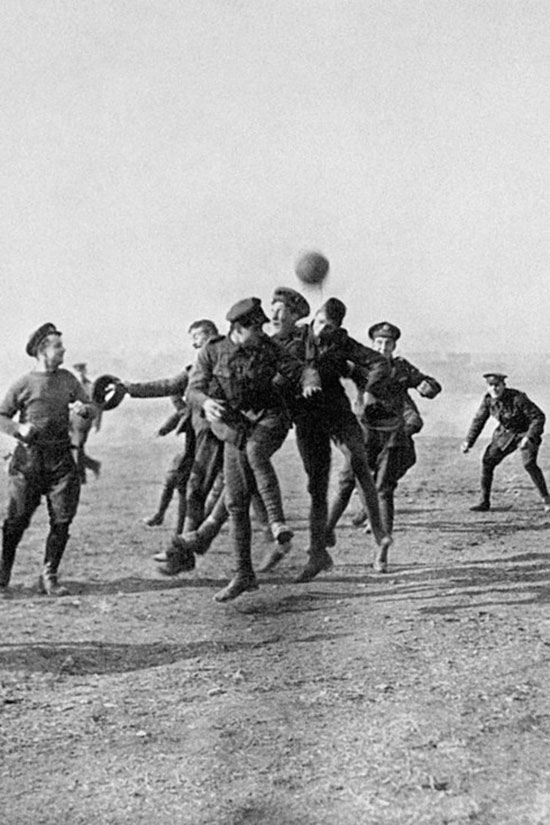
PA Photos/PA Archive/Press Association Images
7. German troops playing football behind the lines (1915)
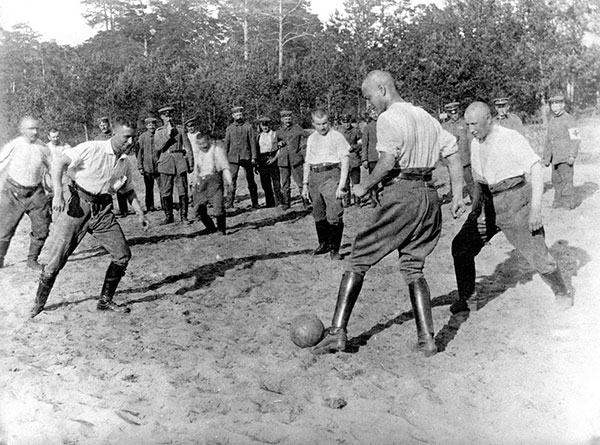
PA Photos/PA Archive/Press Association Images
8. Portraits of German prisoners
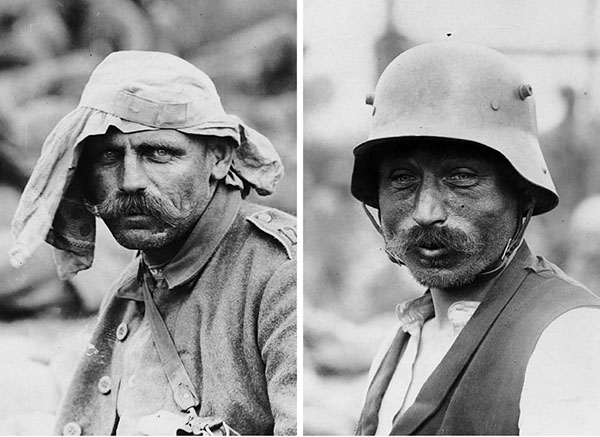
National Library of Scotland
9. Soldiers peering through a shell hole
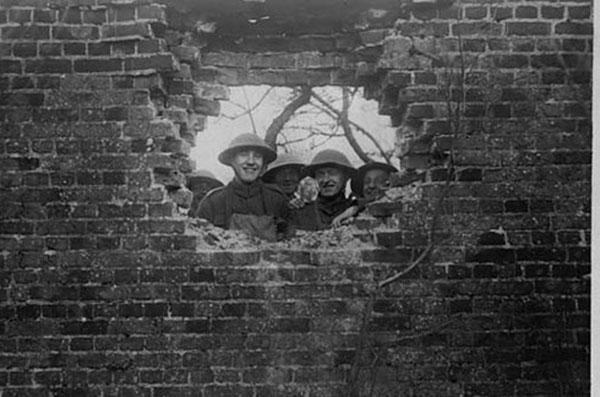
National Library of Scotland
10. A cavalry officer smoking a pipe as his horse picks its way down the steep slope of a mine crater

National Library of Scotland
11. Two soldiers with a rum jar
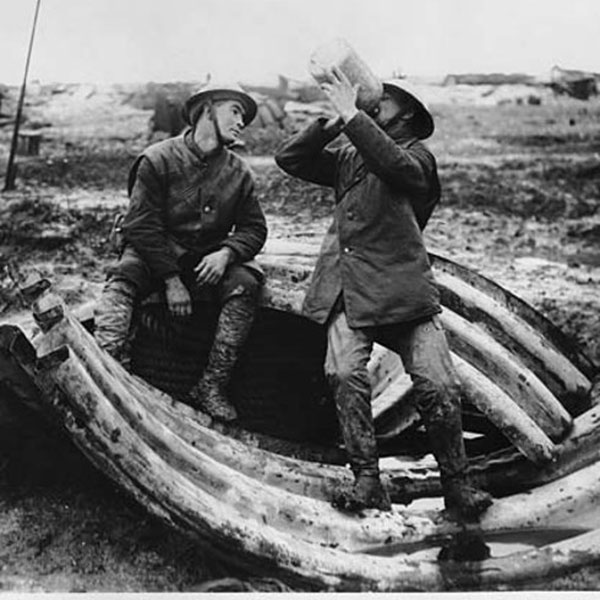
National Library of Scotland
12. British soldiers in a dugout
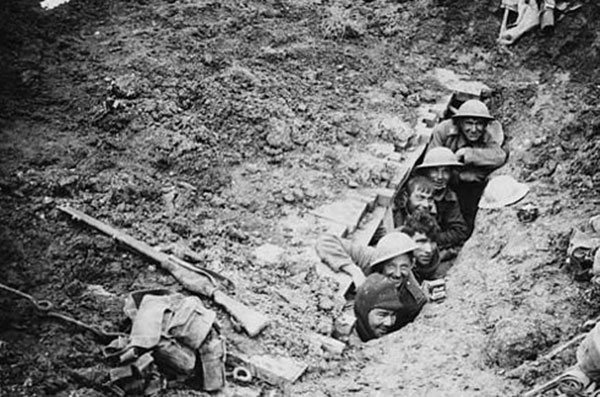
National Library of Scotland
13. At a signal station for the Dehra Dun Brigade, the two soldiers in the middle are on telephones, taking messages (1915).
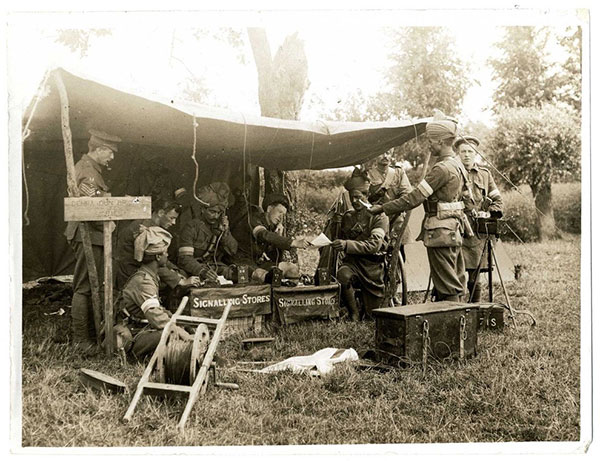
The British Library
14. Off-duty relaxation
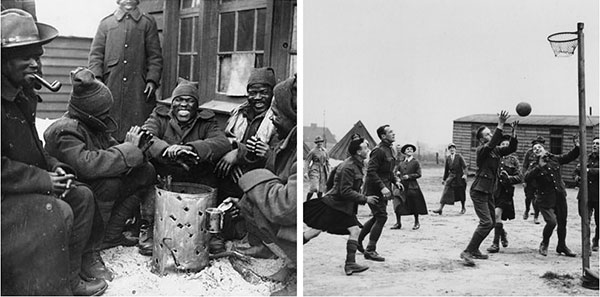
National Library of Scotland
15. A captured German aeroplane

National Library of Scotland
16. Soldiers and locals outside a German building with the door daubed with “Gott strafe England,” which means “God punish England.”
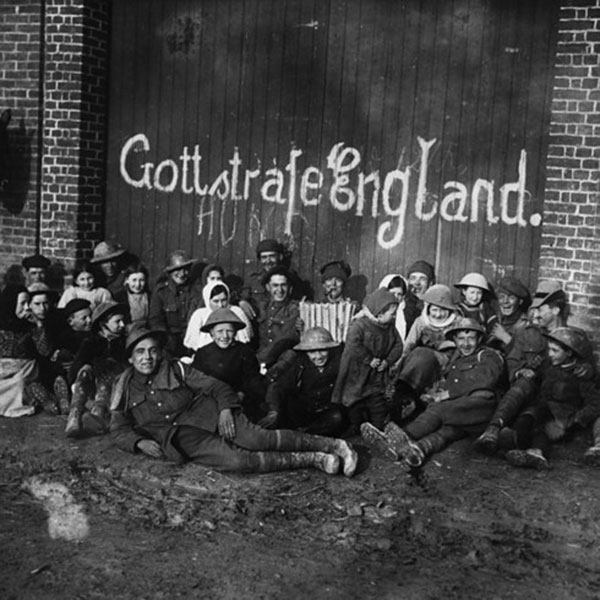
National Library of Scotland
17. French troops throwing rocks at advancing German troops from their hillside trench in the Vosges (1916)
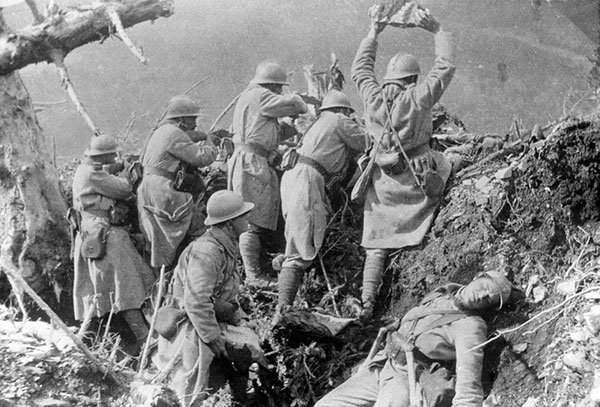
PA Photos/PA Archive/Press Association Images
18. A Japanese soldier trying to rouse a fallen comrade
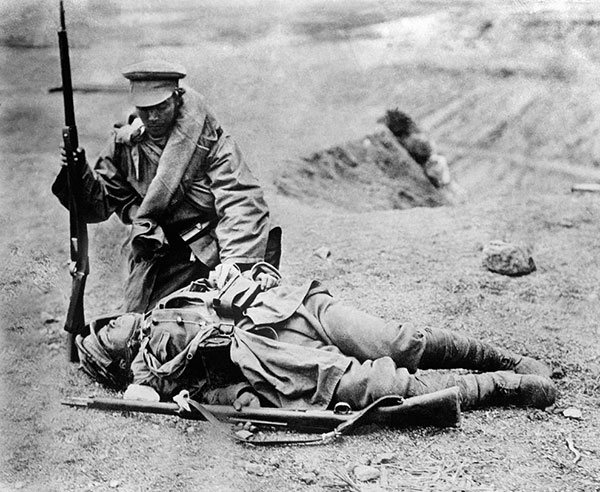
PA Photos/PA Archive/Press Association Images
19. A derelict train with soldiers standing in it, France

National Library of Scotland
20. In a trench in France wearing paper hats from Christmas crackers while a sentry uses a mirror to keep watch on no man’s land (1916)

PA Photos/PA Archive/Press Association Images
21. British messenger dogs with their handler, France.
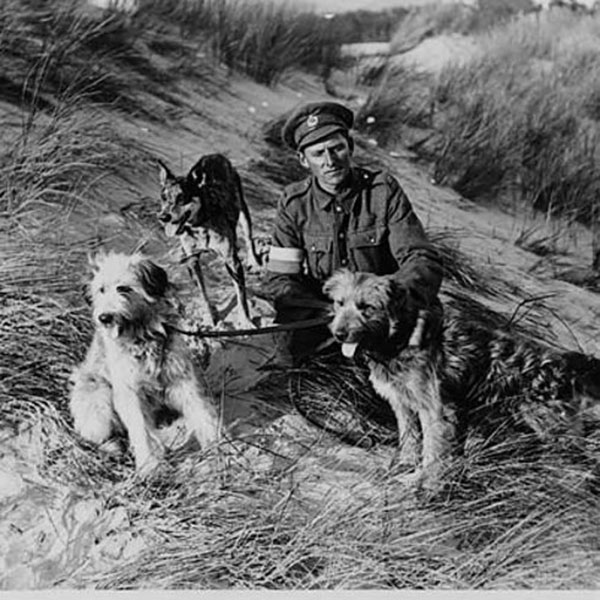
National Library of Scotland
22. Soldiers standing in mud, France.

National Library of Scotland
23. Taking a nap, Thievpal, France

National Library of Scotland
24. British soldiers walking on a shell-cratered winter landscape along the Somme (1916)

PA Photos/PA Archive/Press Association Images
25. A British soldier transporting shells in Messines, Belgium (1917).

National Library of Scotland
26. Civilians and soldiers of the Royal Army Medical Corps giving refreshments to the wounded (1916)

PA Photos/PA Archive/Press Association Images
27. A British soldier gazing out of a dugout with the body of a dead German soldier nearby (1916)
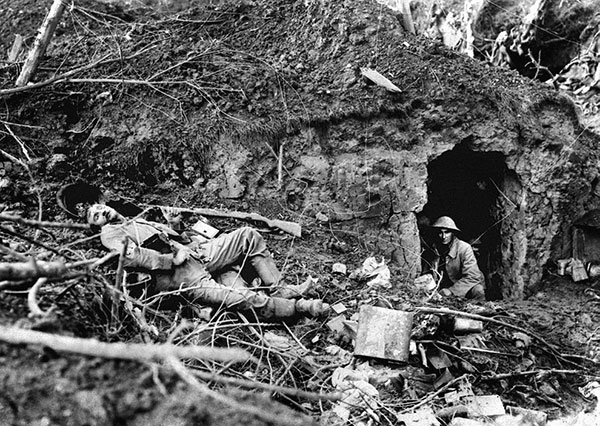
PA Photos/PA Archive/Press Association Images
28. Brigadier-General J.V. Campbell (on bridge) congratulating soldiers of the 46th Division after their successful crossing of the St Quentin Canal
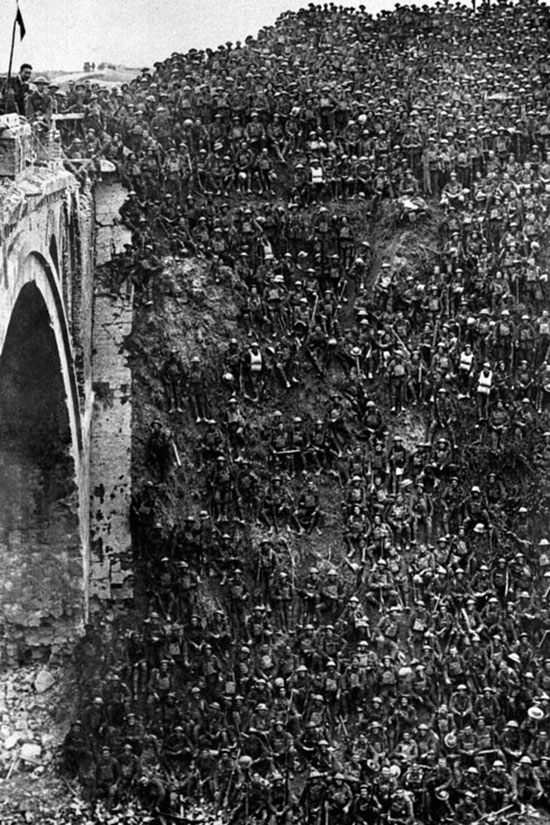
PA Photos/PA Archive/Press Association Images
29. The 1st battalion of the 4th Ghurkha Rifles lining up for inspection
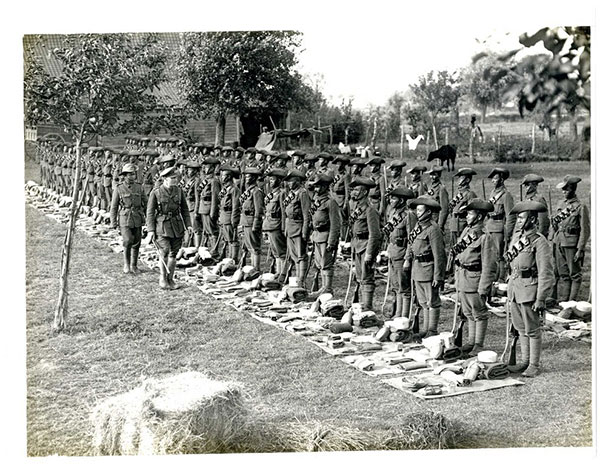
Charles Hilton DeWitt Girdwood / Crown Copyright
30. Soldiers coming out of a trench with their bayonets fixed, ready for attack
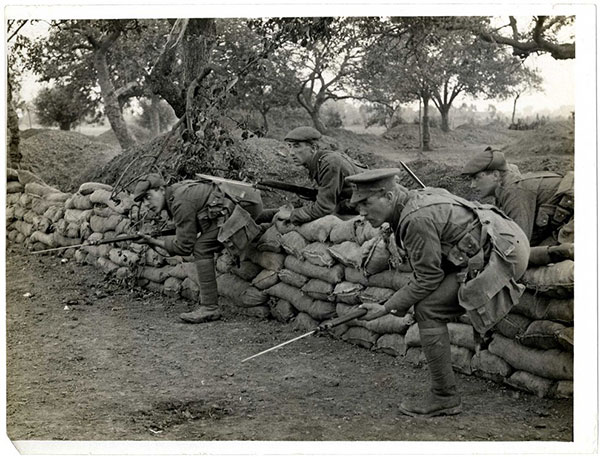
Charles Hilton DeWitt Girdwood / Crown Copyright
31. Soldiers attending a church service in a field
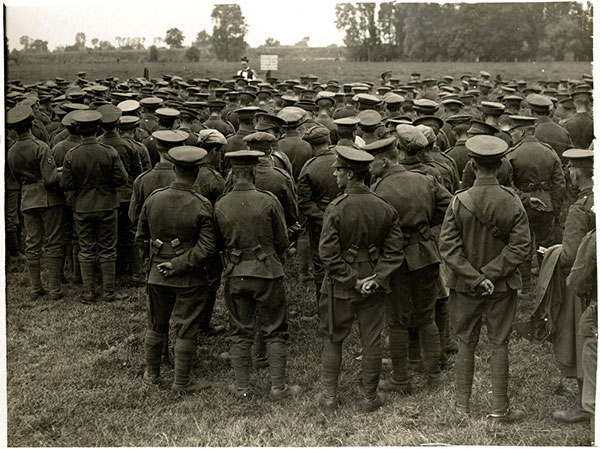
National Library of Scotland
32. An officer in his hut dug into the side of a trench
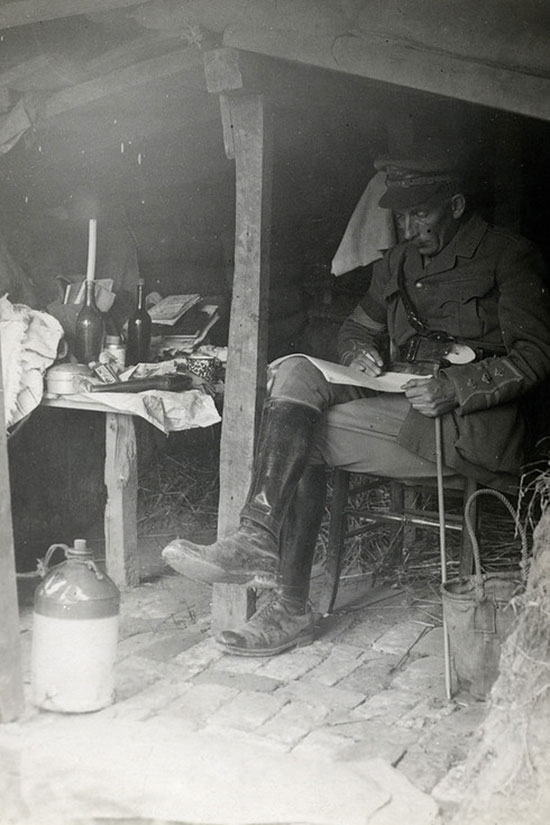
Charles Hilton DeWitt Girdwood / Crown Copyright
33. A sergeant reading a notice that says: “Kindness to animals. 500 horses lamed weekly by nails dropped on roads and horse lines by cookers carrying firewood with nails left in. Please remove nails.”
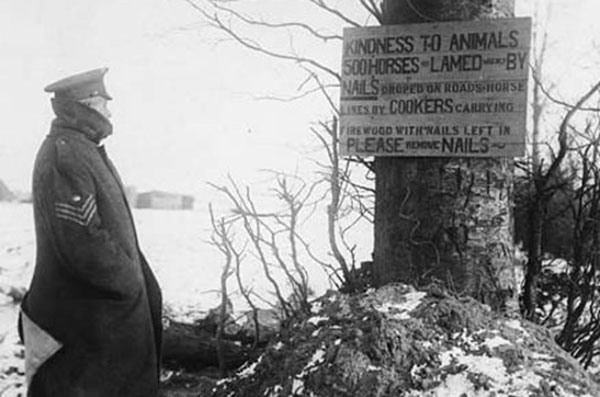
National Library of Scotland
34. The 9th British Lancers charging German artillery in France (1916)
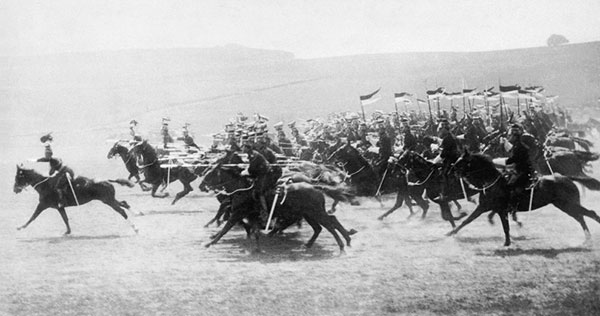
REX USA/Underwood Archives / UIG / Rex
35. Bombarding of Saint-Bertin church (1916)

REX USA
36. German troops wearing gas masks and throwing hand grenades (23 April 1916)
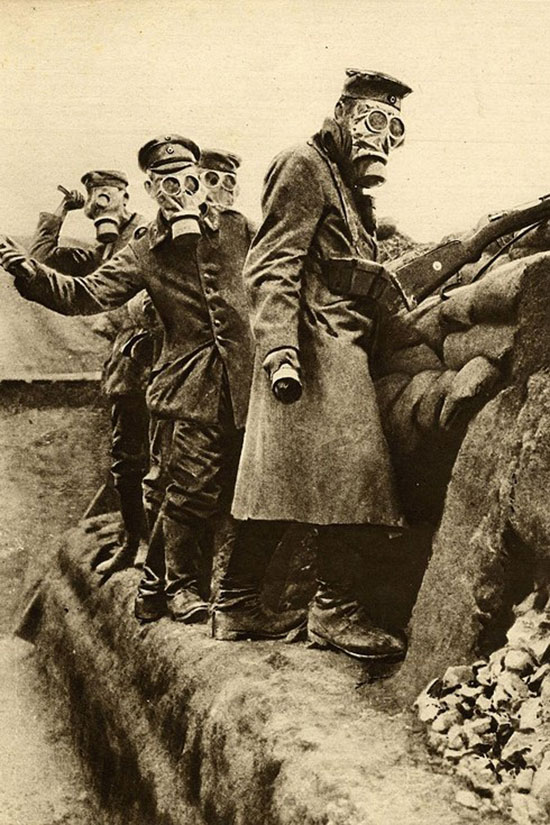
REX USA
37. World War I was the first war in which manufactured poison gas was used as a weapon on a large scale.
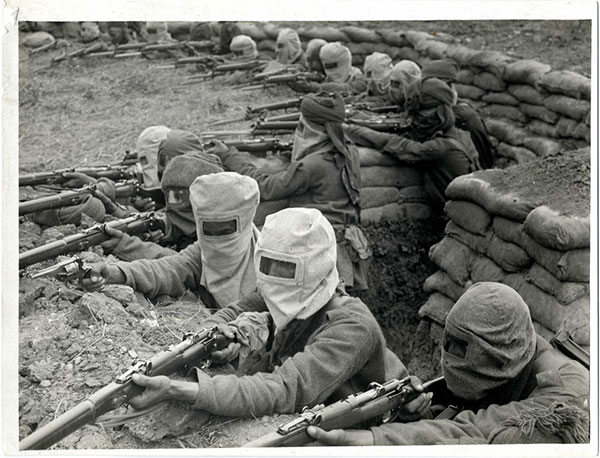
Charles Hilton DeWitt Girdwood / Crown Copyright
French troops wearing an early form of gas mask at the Second Battle of Ypres (1916)
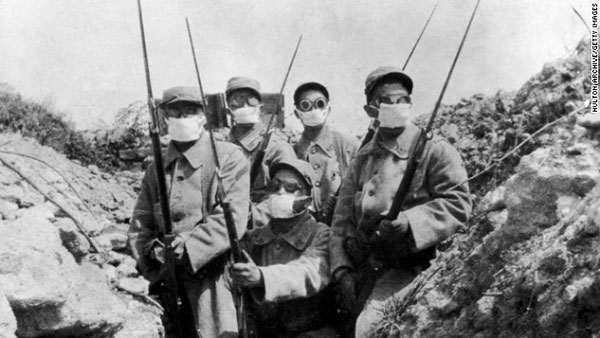
Universal History Archive
38. American infantryman suffocating on the western front.
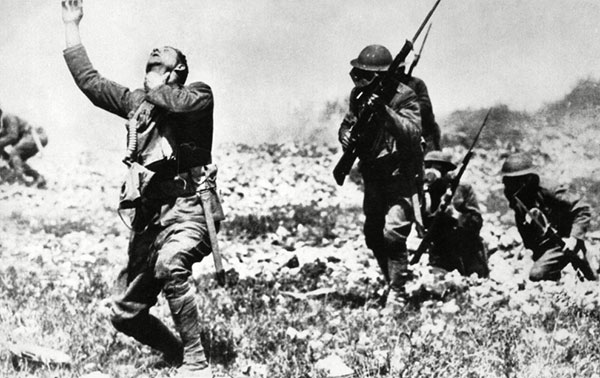
REX USA/Mondadori Collection / UIG / Rex
39. A soldier demonstrating an ungainly French gas mask. “French masks were notoriously unreliable,” wrote historian Gerald Fitzgerald.
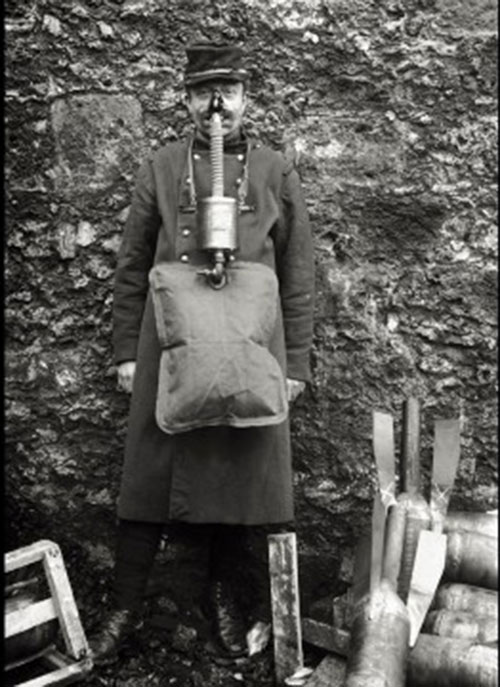
Mondador Portfolio / Getty Images
40. A strongman in the French army lifting a cannon overhead along with three of his comrades (1917)
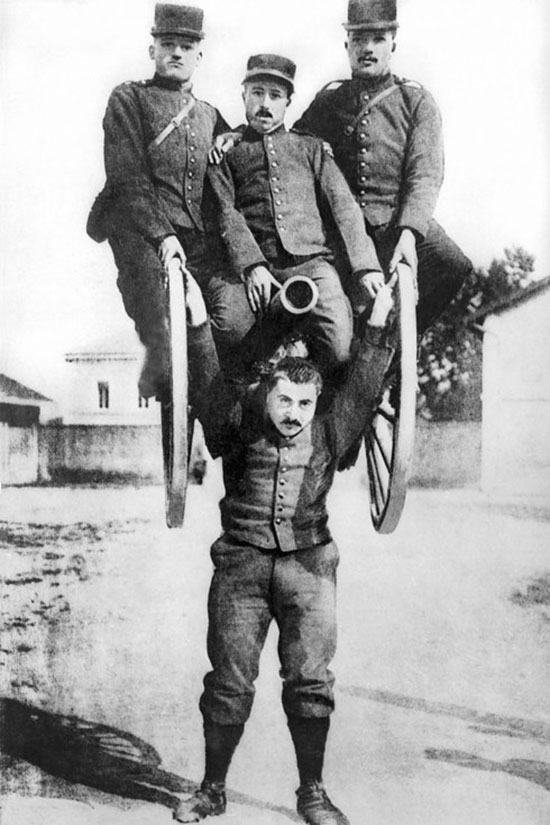
REX USA/Underwood Archives / UIG / Rex
41. British Army’s 55th Division blinded by a poison gas attack (April 1918)
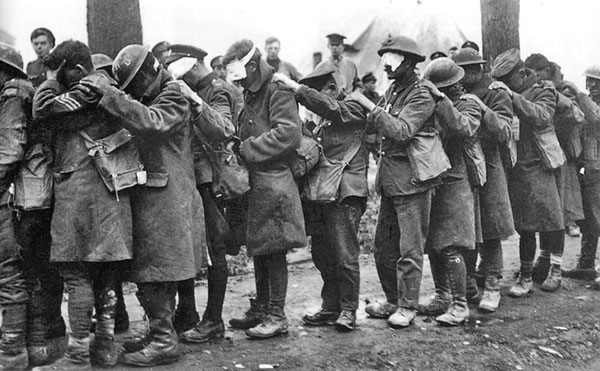
Universal History Archive
42. The bodies of hundreds of Italian soldiers from the Ninth Italian Regiment of the Queen’s Brigade strewn across the battlefield. They were victims of a gas and flame attack.

Hulton Archive / Getty Images
43. A German cavalry unit with both horses and soldiers wearing gas masks advancing during the Second Battle of the Aisne at Soissons, France (June 1918)
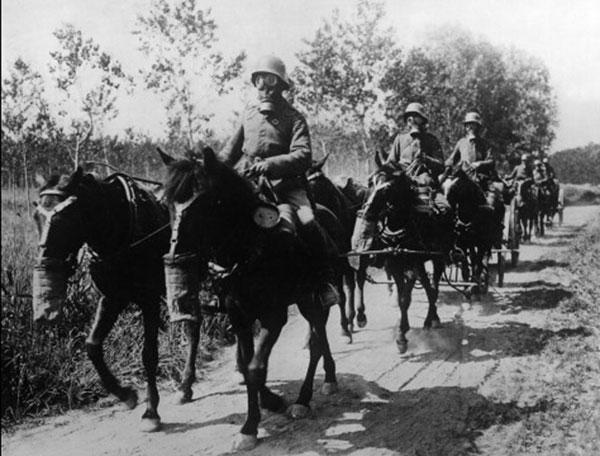
Mondador Portfolio / Getty Images
44. French soldiers making a gas and flame attack on German trenches in Flanders, Belgium (1918)

DOD / Signal Office /Getty Images
45. German prisoners of war at a clearing station after the successful Allied offensive near Amiens, France. General Ludendorff described it as “The Black Day of the German Army” (1918).

PA Photos/PA Archive/Press Association Images

